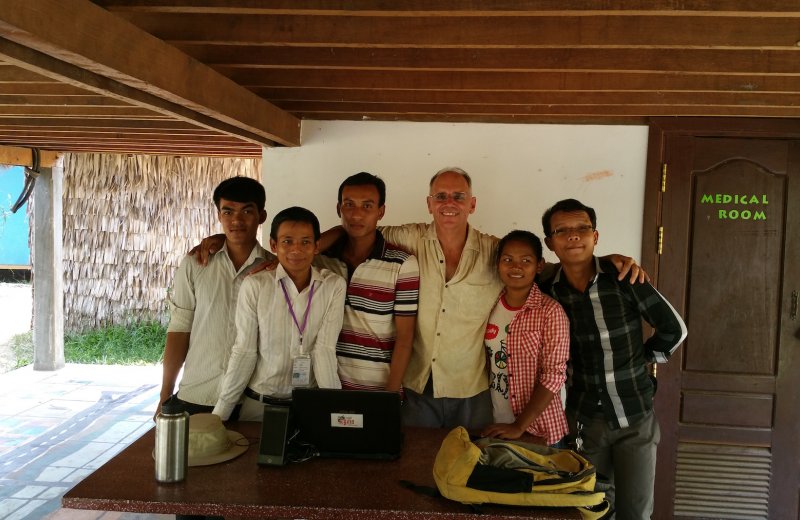Energy in Cambodia
Have you ever wondered how the Khmer people built the ancient temples at Angkor Wat in Cambodia? Was solar power used? Probably not but it is intriguing to know how it was built with rudimentary tools. Did you know Angkor Wat is the fourth most visited tourist site in the world?
Today solar is creeping into the lives of the poor in Cambodia. Because their use of electricity is so low they can easily meet their demand with a small 60 watt module connected to a 12 volt battery and a small inverter. Kamworks is the company selling the small compact solar systems. They have teamed up with a financial institution that arranges the financing. The people pay ten dollars a month until the system is paid off in two years.
I was fortunate enough to teach an introductory solar PV course the winter of 2015 to four students at Grace House charity in Siem Reap Cambodia. I learned quite humbly how little electrical is used by an ordinary Cambodian family when I gave the students a weekend assignment to total all the electrical loads in their houses. The plan was to show them how to calculate the size of solar system they needed to power their house. Monday morning was an eye opener for me when the first student reported she had one light bulb and a fan, the second student had three light bulbs and a fan. Needless to say the lesson plan had to quickly change.
The lesson for Canadian families is that if you conserve and cut back on as much electricity use as possible then it is much easier to power a house with solar modules. We are now paying $0.137 per Kilowatt/hr and rising fast for tier two electricity. By taking advantage of the BC Hydro net metering program it’s an opportunity to offset that cost. I have seen my own solar system give me an effective rate of return of 5.5% after one year of operation.
Cambodia is a country of rich and poor and very little middle class. There is more solar used by the poor than the rich mainly because their electrical consumption very low and they either don’t have the money for State power or there is no State power in their neighbourhood. Electrical prices were about $0.22 per Kilowatt/hr. It seems the rich can afford the electricity and don’t care about climate change and conservation.
The Lower Sesan 2 dam project in Cambodia is comparable to BC Hydro’s white elephant Site C dam. When we can produce solar PV a lot cheaper than building these mega projects things don’t add up economically. Cambodia has many more sunshine hours than we have in BC. If it is economically feasible to install solar PV in BC, then why would Cambodia invest in a large mega project?
In January of this year I was again fortunate to return to Siem Reap to do some more volunteer work. This time I worked with a non-profit organization called Naga Earth and helped them optimize the electrical controls. Naga Earth takes used cooking oil and turns it into bio-diesel. Glycerin is a by-product of the process which they use to produce hand soap. The soap is then distributed free to other NGO’s working with children.
If you ever feel the need to volunteer some help to other people, Cambodia is a very poor country, they can use the help and very much appreciate the help. This has been a very rewarding experience and we have made lifelong friends.
By Viridian Member Don Skerik – as seen in the Cowichan Valley Voice



